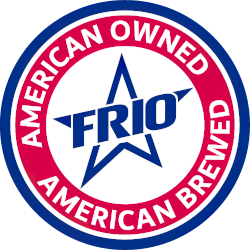Can or Bottle? Which Is Better for Beer?
Can or Bottle? Which Is Better for Beer?
Of course, there will always be those who say that ‘real’ beer drinkers drink from bottles while party drinkers drink their cheap beer from cans. While this may be true in some cases, the world of beer packaging is changing fast and canned beer is becoming more and more popular.
Now, let’s compare cans and bottles, free of prejudice, and decide once and for all which is the better repository for the world’s favorite drink.
First up, which keeps beer fresher?
First up, which keeps beer fresher?
One of the main reasons why beer goes bad is that it’s exposed to too much light and oxygen. Too many UV rays and oxygen can leave the beer too oxidized and skunky. And, just as a wild guess, I don’t think you want to be drinking any beer described as ‘skunky’. What that word means in terms of beer is simply that the beer tastes like burnt rubber or animal musk.
Since cans are more apt to blocking out sunlight and oxygen, cans are able to prevent skunky beer more than bottles. While amber glass bottles block out about 99% of light, the green, brown, and clear bottles barely block out any.
1 point for cans, 0 for bottles
What about portability?
What about portability?
A 6-pack of bottled beer weighs 2 pounds more than a 6-pack of canned beer. That’s 2 extra pounds you would be lugging around with you.
That may not seem like much, but if you’ve ever gone camping, or had a walk on a beach, you know that getting to your camp or picnic sight is no walk in the park.
2 points for cans, 0 for bottles
Cans are more eco-friendly!
Cans are more eco-friendly!
Hypothetically, a ship that has a 2-ton weight limit can hold more cans than bottles, since cans weigh less.
Secondly, cans are more recyclable than bottles are. In fact, aluminum cans are 100% recyclable, plus they can be reused as they are, countless times. Glass, on the other hand, breaks easily which makes it not as long-lasting. Besides that, only about 34% of glass bottles are put into recycling bins. Meanwhile, 55% of cans are recycled.
Once again, that’s another point for cans.
3 points for cans, 0 for bottles
Finally, let’s discuss the most popular hearsay about canned beer…
Finally, let’s discuss the most popular hearsay about canned beer…
Studies show that this is not actually the case. According to the Huffington Post, in a bottled vs canned beer taste test, 51% of people said that they preferred the canned beer. So, clearly there is no difference between the taste of beer from a can and a bottle.
If your beer does taste metallic or tinny, that means that there is something wrong, not with the beer itself, but with the company’s canning process.
4 points for cans, 0 for bottles
What’s the takeaway?
What’s the takeaway?
Numerous breweries are choosing to can their beers now because of the new studies and facts coming out.
So, the main takeaway from this should be that beer is beer, no matter if you drink it from a can, a bottle, a keg, or whatever it is college kids drink from at parties. Enjoy beer for what it is, and if an argument about cans vs bottles does come up, you’ll know just what to say.
Of course, FRIO comes in cans.
Related articles
How Can Light Beer Like FRIO Have Zero “0” Grams of Sugar?
Beer has a reputation for causing beer bellies and weight gain, and its reputation is not wrong.
READ NOW
Can You Drink Beer on a Low Carb Keto Diet?
The ketogenic ("keto") diet is a popular diet trend. Is beer compatible?
READ NOW
The Remarkable History of Beer – Part 1
Beer has been an incredibly popular drink since 7,000 B.C.E. Beer played a key role in Human History.
READ NOW
10 Fascinating Facts About Women's Role in Brewing Beer
How did women first begin brewing beer, and how did beer brewing turn into such a masculine job?
READ NOW
The Remarkable History of Beer – Part 2
Before the Spanish arrived, Native Americans brewed beer with corn..
READ NOW
What's the Difference 2-row & 6-row Barley?
2-row barley grows only two columns of barley kernels, while 6-row barley grows 6 columns of kernels.
READ NOW






